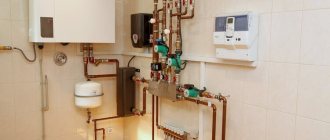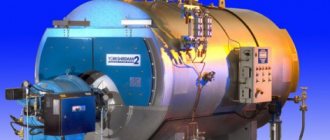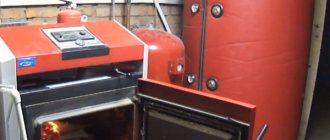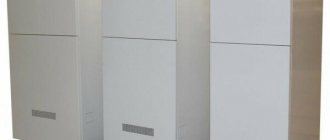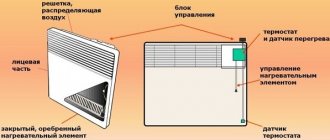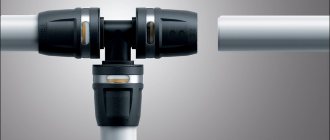Steam boiler flushing
During the operation of steam boilers, deposits of calcium, magnesium, iron, and silicon salts inevitably form on their internal walls.
The result of the presence of these chemical compounds inside the pipes and heat exchangers of the boiler is a decrease in the efficiency of its operation, and in some cases, equipment breakdown and failure occurs. Despite the similarity of the procedure for flushing a steam boiler with a household one, there are certain nuances related to the nature of the deposits. High temperature and pressure lead to the formation of complex compounds:
- Calcium sulfates;
- Hydroxyapatites;
- Magnesium-iron hydrosilicates;
- Iron phosphates.
It is impossible to destroy deposits of these substances using improvised means. Therefore, cleaning a steam boiler should be carried out by professionals who know which product is best suited for each specific case.
Our company uses equipment for washing steam boilers from the best brands, of which we ourselves are suppliers. We have been working since 2011 and have successfully completed thousands of projects in Moscow, other regions of Russia and neighboring countries. Our experience and knowledge allow us to cope with deposits inside steam boilers of any complexity.
How to descale a boiler: washing methods
Impurities clearly negatively affect the operating condition of the boiler. Too hard water always leads to the formation of scale, which can damage the entire system. Typically, users install a mesh filter, which should protect the boiler from scale formation.
The formation of impurities is caused by too much potassium and magnesium in the water, which, during crystallization, settle on the inner walls of the equipment.
Particles formed from water as a result of its heating move through the pipes, causing noise. Usually, equipment that is relatively small in size is installed in houses and apartments. Particles contaminating the system are not drained, which ultimately leads to poor equipment performance or breakdown.
Options for descaling:
- Use of reagent acids. Using strong acids is an effective way to get rid of scale. They easily remove ferrous deposits and carbonate scale.
- To remove silicate scale, it is necessary to use substances that contain a lot of alkali.
- To clean the boiler from scale, you can use a dismountable or non-dismountable cleaning method.
The non-dismountable cleaning method involves the use of reagents, the use of which does not require the process of dismantling the boiler. Most often, the method of this cleaning involves the use of three-component boosters, which perfectly clean boiler equipment. The booster consists of three blocks: a reagent tank, a heating tank and a pump.
What are the methods for flushing a steam boiler?
Steam boilers and heat exchangers belong to the category of industrial units with significant dimensions and large internal volume. This feature has its advantages and disadvantages from the point of view of the steam boiler cleaning procedure. There are special requirements for equipment for cleaning steam boilers and heat exchangers for them. At the same time, washing is not limited to just one method.
Depending on the wishes of the customer and the level of contamination, we can use the following methods for washing steam boilers.
- Hydrodynamic. Water is supplied to the system under high pressure, as a result of which coarse salt deposits are destroyed and coarse particles are removed. This type of flushing is capable of partially restoring normal circulation of the medium inside the boiler.
- Hydropneumodynamic. The steam boiler is flushed with an air-water slurry, which is supplied under pressure into the pipe cavity. The presence of air bubbles creates micro-water hammers, thereby increasing the degree of cleaning of the steam boiler and heat exchangers from deposits.
- Chemical. The destruction of salts is carried out through their transfer from an undissolved to a dissolved state, by exposure to special means for washing steam boilers.
It is worth noting that each of these methods of cleaning steam boiler heat exchangers individually does not give a 100 percent result. To achieve maximum results and completely remove all deposits, we recommend combining cleaning methods. For example, hydropneumodynamic cleaning with chemical washing of steam boilers works well.
Chemical cleaning, boiler washing
The main condition for high productivity and full functioning of boiler equipment is regular flushing of deposits. Both domestic and industrial boilers are usually subjected to chemical flushing. Minimizing the corrosive effect on metal parts is possible only with proper monitoring of the condition of the boiler unit. If you neglect to regularly clean the system, the heating performance of the boiler will decrease, and scale will form on its internal surface.
Scope of work when performing chemical flushing of the boiler:
- Preliminary diagnostics of water circuits of heat exchange equipment using the hydraulic method using excess pressure. (for tightness of circuits)
- Chemical in-place cleaning of industrial boilers, monitoring the progress of the reaction by measuring the pH level throughout the entire flush.
- Boiler alkalization.
- Neutralization of the washing solution, repeated rinsing with water.
- Hydraulic testing (pressure testing) of the boiler.
What do you get as a result of flushing or cleaning the boiler:
- Fuel consumption will be reduced by up to 25%;
- The likelihood of emergency situations (local overheating, cracks in individual components, etc.) will be reduced by 60%;
- The service life will increase after washing.
Prevention is the best way to avoid unscheduled, and therefore costly, repairs or, even worse, complete replacement of equipment.
Our staff consists of qualified and experienced employees who know their business, so flushing the boiler will not be difficult for them. We are always ready to come to your aid, so if you have any questions, you can contact our managers who will answer your questions 24/7. Entrust the boiler cleaning procedure to experienced specialists. Contact a reliable engineering equipment service company.
GLOBAL-ENGINEERING LLC . The result of our work is always the same – high efficiency and uninterrupted operation of the equipment.
To request a boiler flushing, contact our specialists.
See also:
What determines the cost of flushing a steam boiler?
The cost of cleaning steam boilers from scale and other deposits is calculated for each client individually and depends on the following factors:
- the number of steam boilers requiring flushing;
- degree of contamination;
- difficulties connecting our equipment;
- the amount of money spent in the case of chemical washing.
The exact price for flushing a steam boiler is established only after a direct visit of our specialist to the site and inspection.
Cleaning hot water boilers: chemical methods
One of the mandatory procedures, which aims to extend the service life of the boiler installation, as well as prevent emergency situations, is cleaning hot water boilers and maintaining the water chemistry regime of the boilers. This equipment is constantly at risk of contamination and scale formation on all internal surfaces of the boiler due to the constant exposure to high temperatures, which catalyze the formation of scale. If scale forms in a water heating boiler, it loses its ability to conduct heat normally and this leads to high energy consumption, and subsequently to system failure. In order to prevent repairs or replacement of equipment, water heating boilers should be descaled regularly.
BWT solutions for cleaning heat exchangers:

Washing units
Reagents
To get a consultation
The reason for the formation of scale in boilers is the high content of various pollutants in the water, such as dissolved iron and salt liquids, which settle on the hot surface of the boilers and this leads to the impossibility of their normal operation. In order to clean water heating boilers from scale, different methods are used today. The most widespread are chemical and mechanical cleaning of hot water boilers; they allow you to remove most of the contaminants. The choice of suitable cleaning methods for hot water boilers depends on the design features of the boiler. For example, the mechanical method is not suitable for brazed systems, but at the same time, great attention should be paid to the degree of contamination of the boiler, because chemical cleaning cannot always cope with large amounts of contamination. But, despite this, today the most common method is chemical cleaning of hot water boilers, because it is this method that has the necessary efficiency and is a cost-effective way to clean hot water boilers.
Chemical cleaning of hot water boilers refers to the treatment of contaminated surfaces using special chemical reagents that destroy carbonate or any other deposits. The effectiveness of this method depends on two factors: the choice of the optimal reagent for cleaning the boiler and the correct operation of special equipment for cleaning boilers.
Chemical preparation for boiler rooms and cleaning is carried out only in the presence of specialized equipment for cleaning boilers, the main task of which is to supply a heated cleaning solution under a specific pressure into the system. It is necessary to control the temperature as well as the pressure of the solution, this is due to the influence of these factors on the course of the reaction between scale and the cleaning solution and on the effectiveness of chemical cleaning of boilers.
For chemical cleaning of boilers, strong acids are used, which do an excellent job of dissolving most of the possible substances. For example, hydrochloric acid solutions are used to clean water heating boilers from carbonate scale, and phosphoric acid solutions are used to remove metal oxides. Reagents for cleaning boilers are selected based on information about the composition of scale and taking into account the compatibility of the reagents and the material from which certain boiler parts are made.
Another prerequisite for chemical cleaning of hot water boilers is special equipment for cleaning boilers. The main task of the equipment is to prepare, prepare and supply cleaning solutions to the system and to ensure the circulation of the solution in the system, as well as its subsequent removal. Equipment for cleaning hot water boilers consists of several elements. First of all, it includes a tank for the washing water reagent, which contains the solution necessary for cleaning, a heating block that raises the temperature of the solution to the desired value, and a pump that supplies and removes the boiler cleaning solution from the system. In addition, one should take into account the importance of the fact that for high-quality cleaning of boilers, the equipment pump must switch to reverse flow mode, in which the waste solution will be removed from the system.
All elements of this equipment are made of chemically resistant materials, because each unit of equipment is in contact with aggressive acids.
How safe is it to clean a steam boiler?
Regardless of the chosen method for flushing the steam boiler, we guarantee that the procedure will not affect the condition or performance of the heat generator. Our specialists know how to calculate the value of excess pressure during mechanical cleaning and the amount of active agent for chemical cleaning.
In addition, the reagents used are a product of our own production, which is made with strict adherence to German technology. They have passed laboratory tests for biodegradability in natural environmental conditions and meet the requirements of the sanitary and epidemiological service.
Aquatechno products do not have a negative effect on pipes, seals or other elements, as with “handicraft” acid washing of steam boilers. The anti-corrosion substances included in the reagents form a protective film, which for some time protects parts from the appearance of new deposits.
Why us
Our company is officially registered. We have the necessary documents to provide steam boiler cleaning services to enterprises of any form of ownership and field of activity. We cooperate with both private entrepreneurs and large factories. We work with all forms of payment: cash, non-cash, bank transfers.
To order or find out more about flushing our company’s steam boilers, just contact us in any convenient way specified in the contacts.
What are the restrictions on hydrodynamic cleaning?
Hydraulic cleaning of boilers is applicable only to drum steam boilers E, DE, KE or DKVR.
This is due to the fact that the above boilers have access to screen and convection tubes. In boilers E, DE, KE or DKVR, the specialist performing hydrodynamic cleaning of the boiler is located inside the drum and performs work on even the most inaccessible tubes.
In this regard, there are restrictions for water heating boilers PTVM, KVGM, ZIO for cleaning using a hydrodynamic method, since the collectors of these boilers do not have hatches for comfortable access for a flushing specialist.
For the same reason, some fire-tube boilers cannot be washed completely, but only from the top or from the end using hydrodynamic cleaning, because it is in these places that they have access to the pipes. These include the following boilers: Booster, Ferolli, Babcock Wanson, De Dietrich, Buderus, ICI, IVAR, BOSH UL-S, Unical Bahr, Viessman.
Most often, high-pressure hydrodynamic cleaning is carried out in combination with chemical treatment of the boiler, when something that could not be removed by chemical washing is removed.
What stages do we go through when cleaning industrial boilers?
Hydrodynamic boiler flushing has a mandatory 9 stages. Here they are.
1. Draining water from the boiler
2. Opening the hatches of the upper and lower drums
3. Dismantling the steam separator
4. Cleaning of each boiler tube by a specialist located inside the upper drum
5. Final washing of the upper drum.
6. Cleaning screen and convection pipes
7. Opening and washing the collector
8. Washing the lower drum
9. Removing sludge and scale from the lower drum.
What else do you need to know about cleaning industrial boilers?
By flushing boilers we mean a set of measures during which, using physical or chemical methods, deposited scale is removed from the boiler and heat exchanger. There are two types of boiler flushing: regular and repair. With regular flushing of boilers, small amounts of scale are removed from contaminated parts of the boiler installation, while repair flushing of the boiler is carried out in cases where regular flushing no longer helps.
Regular flushing of a steam boiler usually does not require disassembling the system and is carried out using special boiler flushing equipment. This method allows you to prevent the occurrence of large amounts of scale and thus prevent some possible emergency situations associated with clogging of the system. When operating a boiler installation, the contamination of which prevents the normal circulation of coolant through the system, there is a risk of mechanical damage to the boiler installation caused by an increase in pressure inside the system, which is why it is so important to carry out regular flushing of the boilers.
Repair flushing of the boiler usually involves disassembling the system. This measure is usually carried out in situations where the degree of contamination of the boiler installation is assessed as high, and further operation of the equipment is unsafe. Similar situations arise in the absence of regular boiler flushing for a long time, which leads to disruption of coolant circulation in the system. Most often, repair boiler flushing is carried out using physical methods, but it is also possible to use chemical boiler flushing in combination with mechanical cleaning.
The lack of regular flushing leads to clogging of the system, and operation of a clogged boiler installation without repair flushing of the boiler can lead to accidents in the boiler room, which is why timely flushing of boilers is so important.
Options: how to descale a boiler
If purified water is used in the main line, then flushing the boiler can be done once every four years. Using ordinary running water can lead to damage to the boiler, since such water is too hard. The efficiency of the boiler decreases if cleaning is not carried out for a long time.
The simplest and most effective cleaning method is manual washing - you can do it yourself.
To carry out simple cleaning of the heat exchanger, it is necessary to dismantle the boiler. Cleaning can be done in several ways: mechanical and washing. When dismantling the boiler you need to be careful and careful.
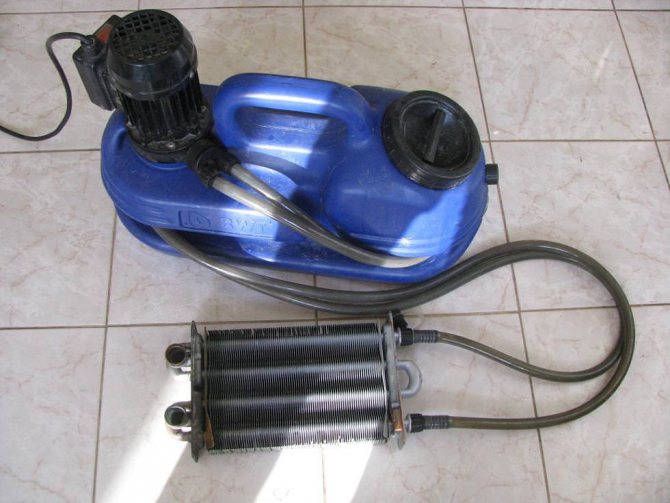
Options for descaling the boiler:
- Mechanical. Allows you to remove plaque and other mechanical particles using a vacuum cleaner, scraper or metal brushes.
- Flushing. The coating of the heat exchanger parts can be soaked in a special solution. This method is good for cleaning boilers with two circuits, as they become dirty very quickly and intensively.
The most effective type of purification is considered to be preliminary water purification. The boiler can be protected from scale formation by installing scale filters. If extraneous sounds are detected in the heating system, it is necessary to check whether mechanical impurities have appeared in the boiler.

